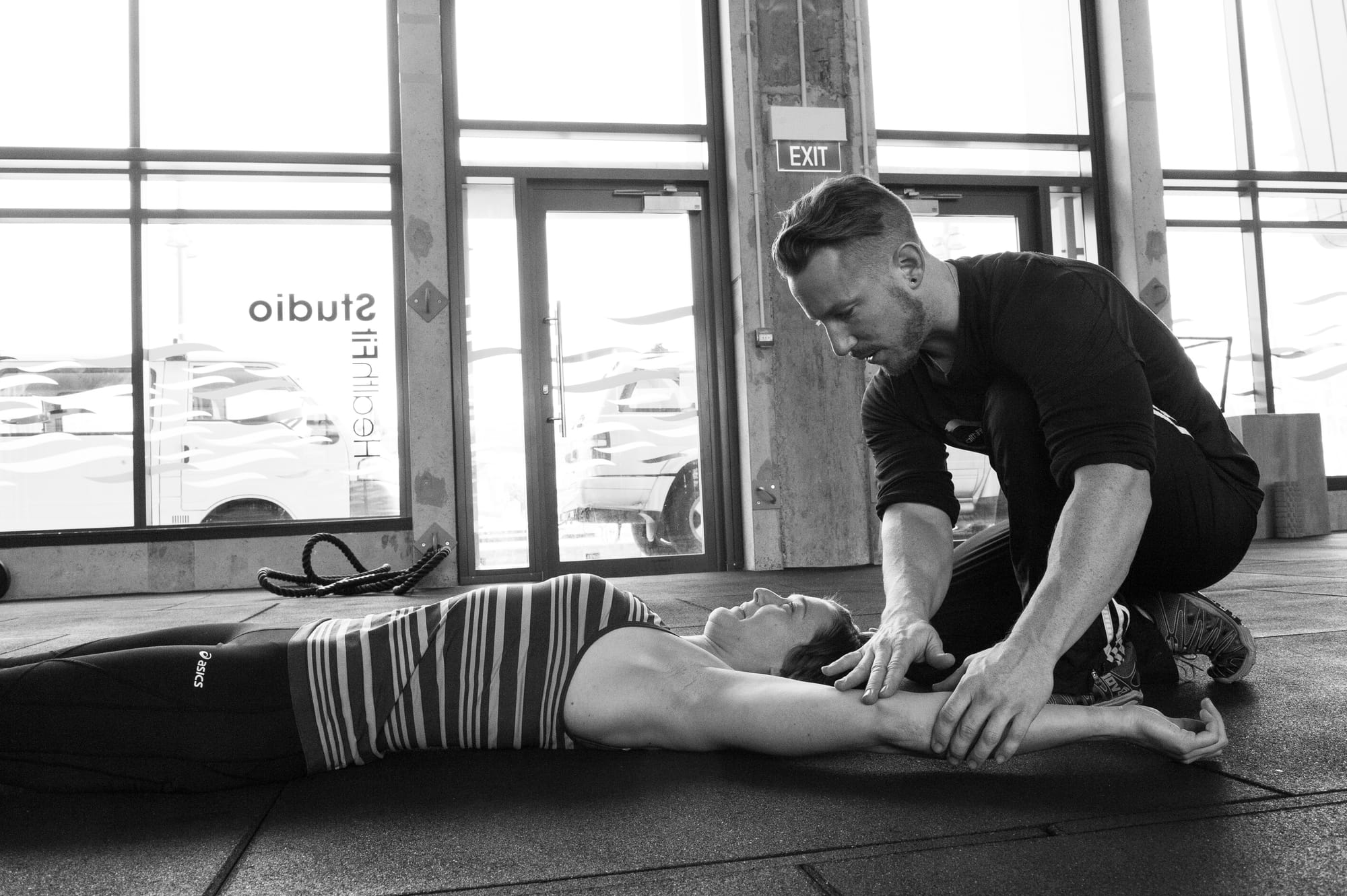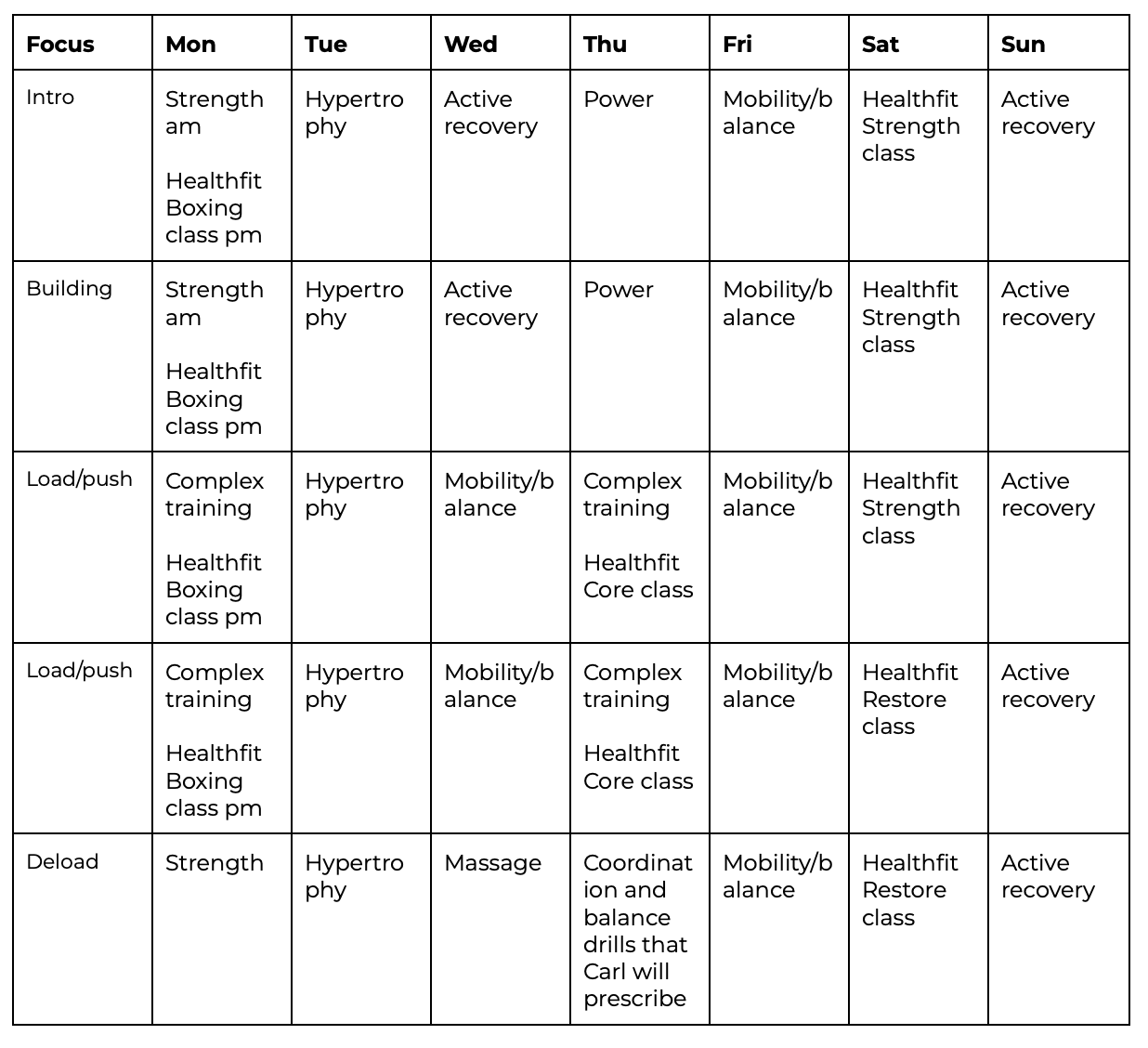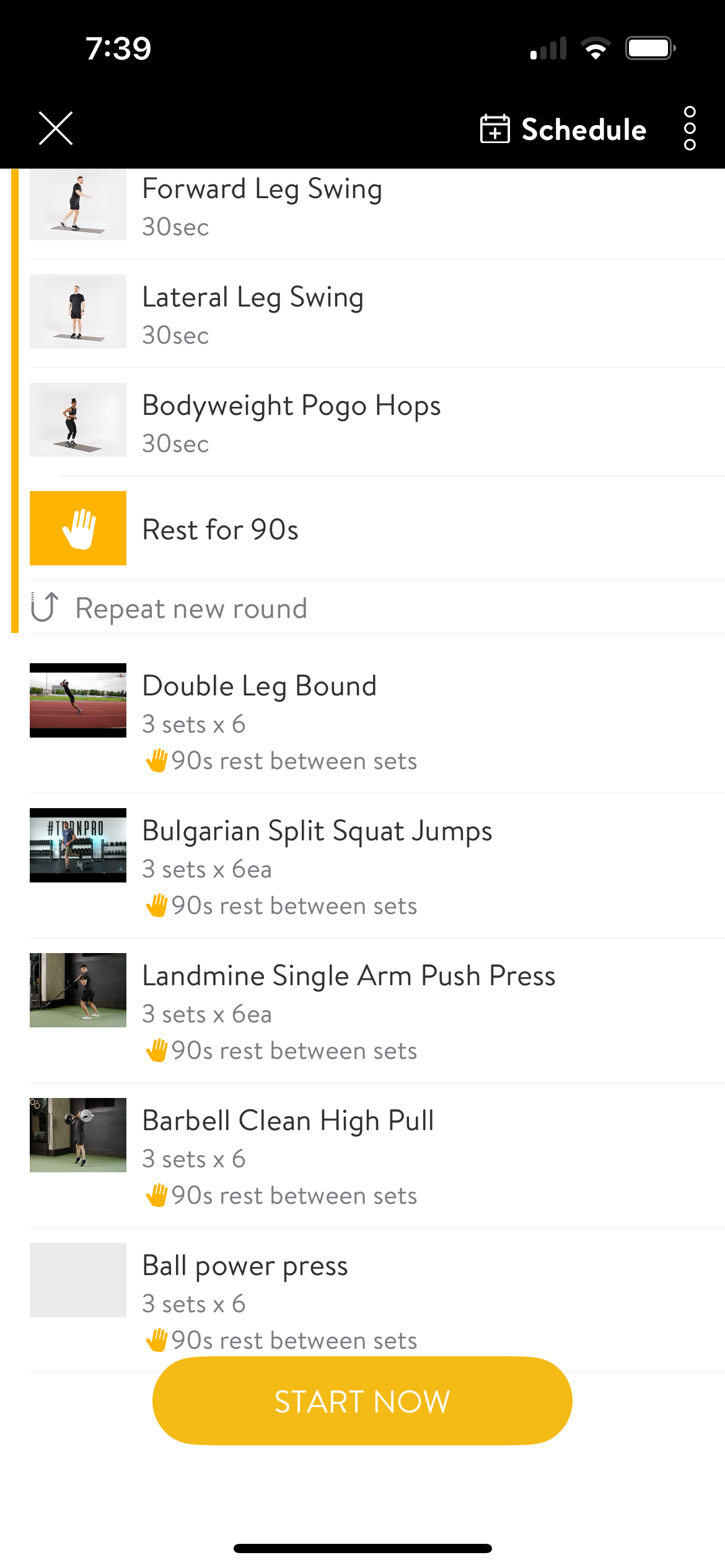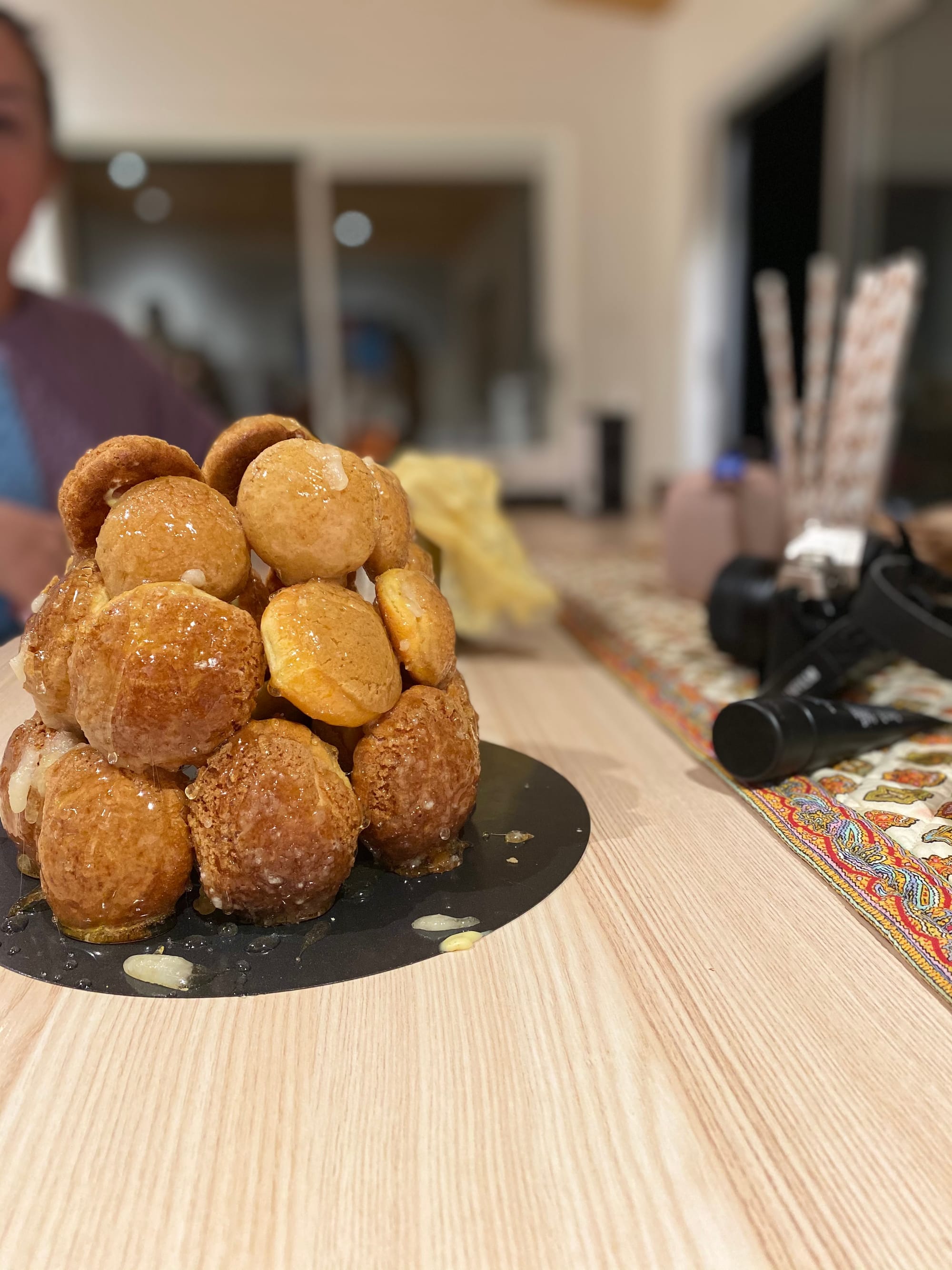From Data to Domination - A Superhero Blueprint

Carl here - Today's post is a follow-up to last week’s superhero post with Torque (aka Megan). Now that we’ve got the data, the superpowers, and the kryptonite… the big question is: what do we do with it all? I will start by outlining the plan and Megan (having just seen this!) will then weigh in with her response to it (I look forward to her response to the core class suggestion).
I guess this is a little insight into how I work as a coach (from a programming perspective). Here’s the process I go through:
- Create a relevant assessment for the individual
- Attain goals
- Check availability, resources & barriers
- Create a plan that fits the goals and addresses anything that popped up in the assessment
- Revise, adapt and adjust the plan (because… life)

So, the assessment’s been completed and a primary goal has been set: Become a superhero, level up strengths and address the weak spots.
The Game Plan
Primary goal:
Power and mobility: building explosive strength through the upper and lower body, while also improving overall movement and Megan’s “sit to rise” test.
Secondary goals:
Strength and proprioception: getting stronger and improving body awareness (think the “blind stork stand” test).
All of this while keeping muscle mass, maintaining fitness, and staying consistent.
Availability, resources, barriers:
Megan’s in a great spot right now, heaps of availability, full gym access, and the only barrier (a little knee niggle) is already improving.
Creating the Superhero Plan
This plan is a flexible outline for the next block or two, think of it as a guide rather than gospel.
We’ll play with things during sessions, tweak where needed, and make sure progress keeps rolling.
Programming principles across all phases:
- Rotate programmes or occasionally prioritise one focus
- Always include mobility and proprioception work (non-negotiable)
- Move through all planes — forward/back, side/side, rotation
- Include one rest or active recovery day every 3–4 days
- Keep some exercise consistency for progress, but sprinkle in variety to keep it fun and offload tissues.
Outline:
This is only an example of how it may look, but during our sessions together, I will play with things and progress or adapt when necessary.

Programming Principles for Each Phase
Intro Phase
This is the “lay the foundation” block, getting the body moving well, dialling in technique, and building confidence under load.
- Movement quality comes first.
- Control beats chaos.
- Learn the key lifts and prime the nervous system for what’s next.
Think of it as putting on your cape and checking it fits before you start flying.
Building Phase
Now we start stacking some real training bricks. Strength, hypertrophy, and work capacity all come into play here.
- Gradually increase load or volume (progressive overload)
- Mix strength and hypertrophy sessions to grow and lift heavier
- Keep movements familiar, but tweak tempo, sets, or range to create challenge
Consistency here sets the stage for power later, build the engine before you floor it.
Load/Push Phase
This is where the superhero vibes start to show. The goal: higher performance, power, and resilience.
- Use complex training: pair heavy lifts with explosive movements
- Choose exercises that target Megan’s specific goals, explosive strength, mobility, proprioception
- Keep an eye on fatigue,recovery and mobility days are part of the programme, not an afterthought
We’re sharpening the sword here, not just swinging it harder.
Deload Phase
Every superhero needs to recharge. This phase is about recovery and letting the body adapt before the next big block.
- Drop training volume and intensity
- Focus on restoration: mobility, massage, coordination work
- Reflect, reassess, and get ready for the next round
Adaptation happens here, rest is where the magic sticks.
Each phase feeds into the next, keeping Megan moving toward her superhero goals without burning out or losing focus. Mobility and proprioception are the glue throughout it all, keeping her body aware, stable, and ready to perform.

Welp. Megan here. Have you ever felt really gung ho about an idea and then - when reality hits - wonder if you’ve maybe bitten off more than you can chew?
My friend Jess and I once decided that we would make a croquembouche. In a rented holiday house, with only the provided utensils and pots, and an unfamiliar stove and over.
I’ve made all the components of a croquembouche before - choux pastry, craquelin, pastry cream and caramel. I can make choux with my eyes closed. But I can remember, halfway through piping the pastry cream, thinking it wasn’t going to work…that maybe our passion and dedication wasn’t quite enough.
It was one of the more hilarious days of my life, and the, uh, somewhat squat pastry tower was delicious, if not as spectacular as we’d imagined. But looking at Carl’s programme, I am feeling that familiar sinking feeling.

Core class? CORE CLASS? An entire class just about my flimsy core? I have significant regrets. (And a craving for pastry.)
I was at the gym this morning, sitting on the floor, attempting proprioceptive neuromuscular facilitation (more on this in a couple of weeks). Basically, doing fancy mobility exercise.
After I whined my way through that, and then got myself in my proper place - under a heavy barbell. I asked one of the other trainers at the gym a question. Riley is a trainer, a physio, an elite runner (good luck next week, Riley!) and an all round GC. After we talked about my limited ankle mobility, I said, “you know, I have regrets. I didn’t know there were this many things wrong with my body five years ago.” He, sagely, pointed out that also: it never stops. Bodies are a constant work on.
I have been reflecting on that feeling all afternoon. I’ve gotten much better at listening to my body since I started lifting. I feed it when it’s hungry, I let it rest when it’s tired. I give it water and protein and good gut bacteria. (Ask Carl about my sourdough deliveries!)
Like my pastry skills, I am very proud of how I’ve been consistent in the gym for 5 years. But sometimes, there’s a sneaky voice in the back of my head that tells me my strength is a fluke. Luck of genetics and sheer bloodymindedness that I will not fail this lift in front of a man. Some days I feel like I am lifting heavy in spite of my body. not with it. I listen to my body, and I tell it what to do, but I am not having a conversation with it. We’re not - pun intended - engaged.
Mobility feels like coaxing my muscles, A negotiation, rather than piling 20kg plates on top of them and letting them figure it out. The plyometric drills (jumps and bounds and throwing heavy balls) feel like things I have been avoiding doing with my body for decades. Because I didn’t believe I could trust it to not buckle under the pressure.
Golly. This went to a vulnerable place. The movie superhero version of this would be me, having destroyed a city because my father didn’t love me, walking morosely through ruins, amid a wild crisis of confidence.
But if I have learned anything, it’s this: this bit, the bit where it feels hard and awkward and stretchy? It’s where the growth is. So, we don’t run away from this feeling, we lean into it.
Carl was stoked last week that I said I wasn’t scared of the gym, and I’m not. I am nervous of new things, and of growing pains. But that doesn’t mean we quit at the first hurdle. (Oh God, are there going to be hurdles?)
I totally get being nervous trying new things - I am too! I get being scared to show up to the gym, and afraid of what your body might decide it’s capable of. But if we keep showing up - through core class, rebuilding that trust in our bodies, having that conversation - maybe that’s where Torque’s power actually lies. Not from the plates on the bar, but persistence, a little courage, and a shittonne of caramel holding it all together.
Cool Stuff we saw:
This review suggests that the brain, not gluten, may drive most "gluten sensitivity". Around 10% of adults believe they have gluten sensitivity however, only 1/4 of them react when given gluten, suggesting other triggers are at play.
Green tea boosts how muscles use and store energy, this study suggests!
Not drinking enough water heightens cortisol spikes in response to stress, according to this study. The lowest fluid group had, on average a 55% higher cortisol measure that stayed elevated for 30 minutes!
